The Quiet Strength of Curves
The Quiet Strength of Curves: Why Soft Architecture Creates Stronger Human Connections?
In a world dominated by sharp edges and rigid lines, there’s something profound that happens when we encounter a gentle curve. Our shoulders relax. Our breathing deepens. We instinctively move closer, drawn by an ancient recognition that soft forms mean safety, nurture, and home.
As architects and designers, we have the power to shape not just spaces, but the human experience within them. At Mahya Salehi Studio, curves aren’t just an aesthetic choice; they are a deliberate tool for creating environments that embrace rather than intimidate, that welcome rather than exclude.
By Mahya Salehi, AIA | Principal, Mahya Salehi Studio

The Science of Softness
Recent neuroscience research reveals what our bodies have always known: curved forms trigger different neural responses than angular ones. When we encounter sharp corners and harsh lines, our amygdala, the brain’s alarm system, remains slightly activated, a vestige from when jagged edges meant potential danger. Curves, by contrast, signal safety and approachability, allowing our nervous systems to settle into a state of calm receptivity.
Dr. Moshe Bar’s groundbreaking research at Harvard Medical School demonstrated that people consistently rate curved objects as more pleasant and approachable than their angular counterparts. But this goes beyond preference; it’s about creating spaces that actively support human wellbeing.

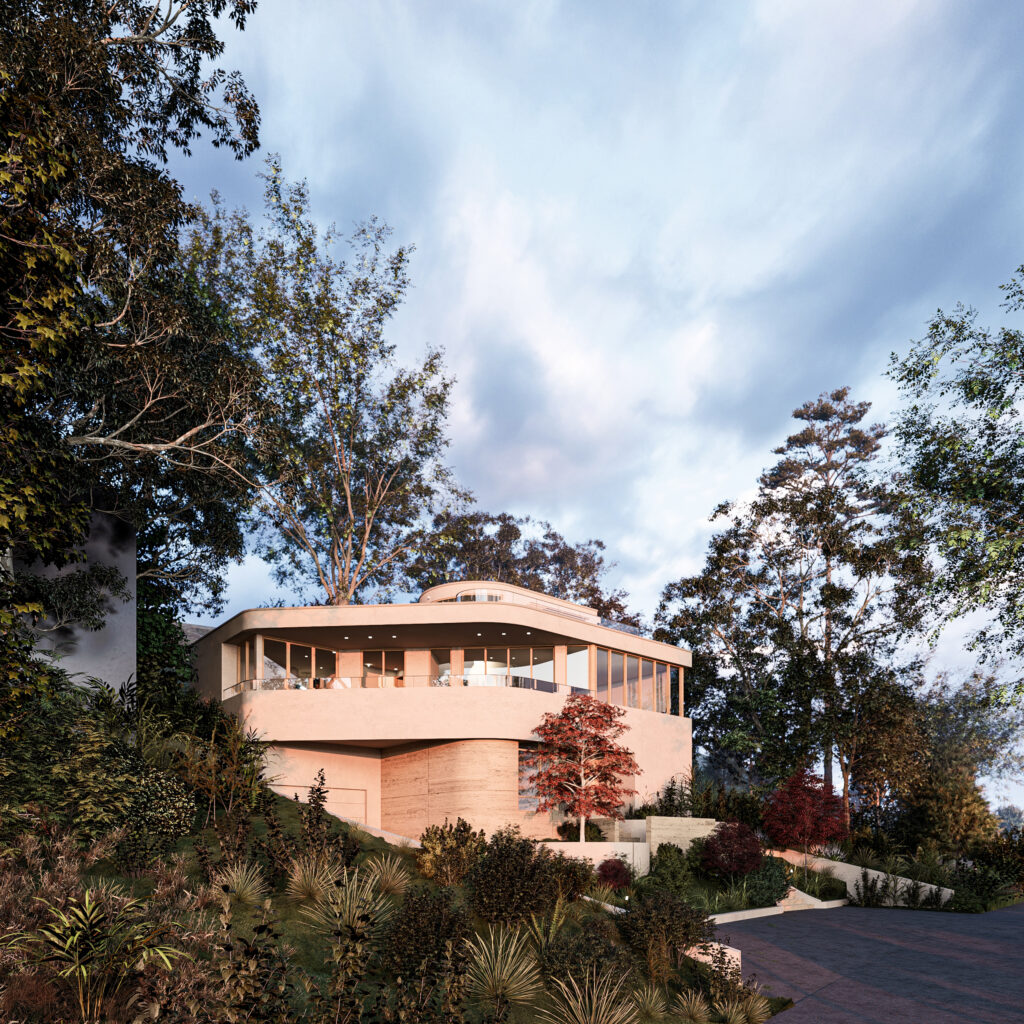
Architecture as Embrace
Think of the most comforting spaces in your memory. A grandmother’s rounded kitchen table. The curved bay window where morning light pools. The gentle arch of a doorway that frames a view. These moments of architectural softness become anchors of emotional memory, spaces our bodies recognize as inherently nurturing.
This understanding drives every decision we make at the studio. When we design with curves, we’re not just creating visual interest—we’re crafting environments that hold people gently, that encourage lingering, connection, and the kind of deep relaxation that only comes when we feel truly safe.
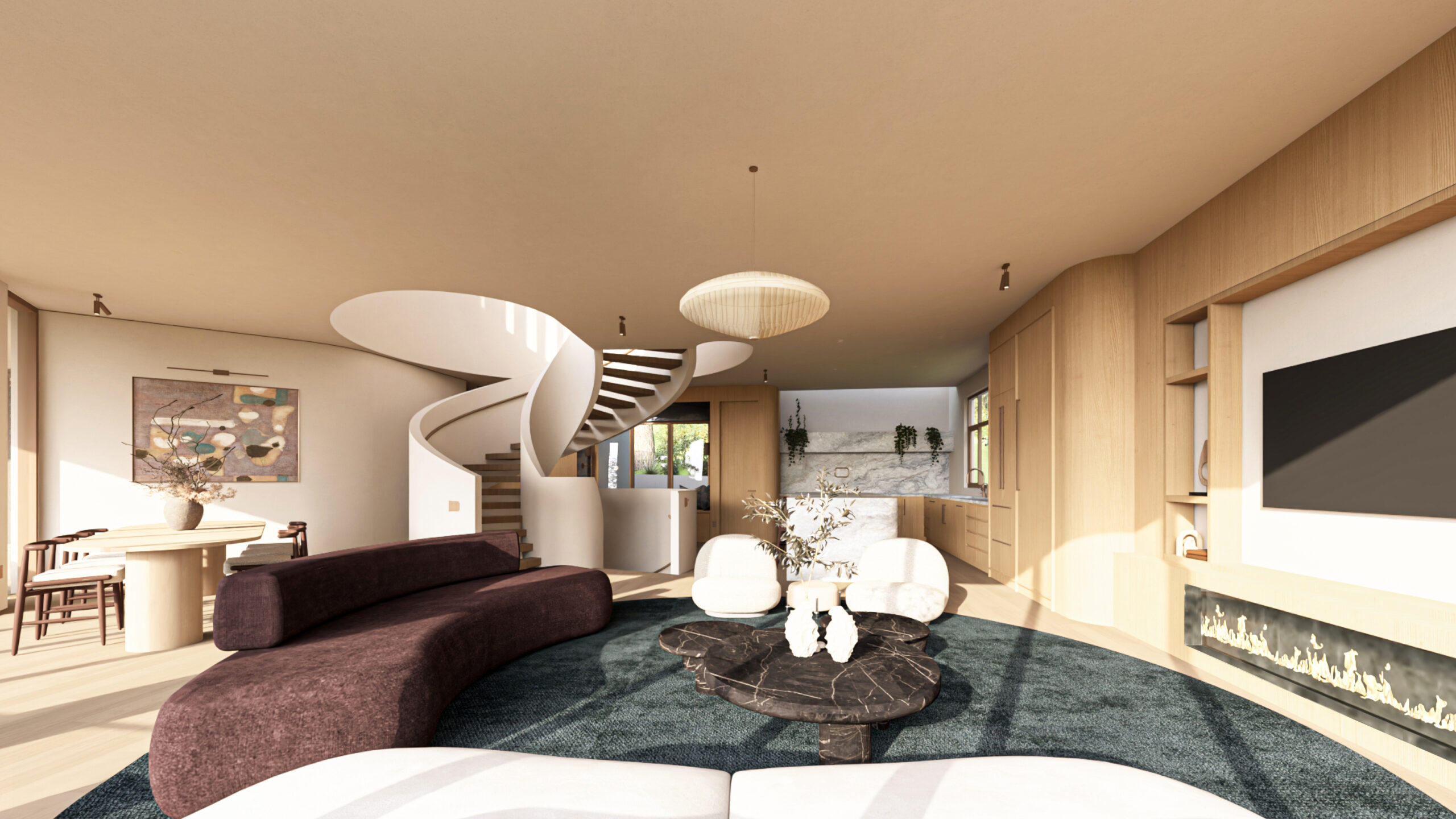
The Feminine Principle in Architecture: There’s something inherently feminine about curves, not in a limiting or binary sense, but in their embodiment of qualities our built environment desperately needs: receptivity, flow, and the strength that comes from flexibility rather than rigidity.
Our recent MSS Adeline Residence in Burlingame exemplifies this philosophy perfectly. Commissioned by a grandmother as a legacy gift to her daughter and granddaughter, the design is shaped by curves, soft lines, and a quiet strength inspired by the women it was built for. The home’s sweeping form embraces the Bay views while creating intimate spaces for three generations to connect.
The curved walls don’t just look beautiful, they guide movement through the space like a gentle hand on the back, creating natural gathering points while maintaining visual connection throughout. The result is architecture that feels less like a container and more like a protective embrace.
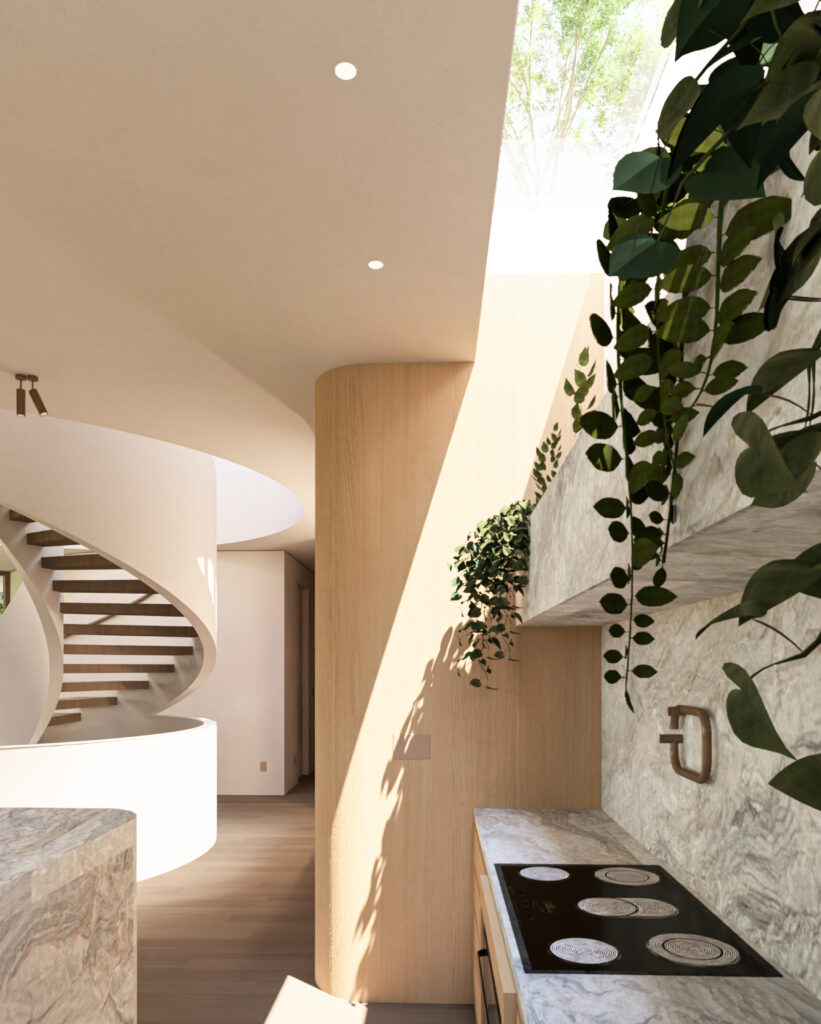
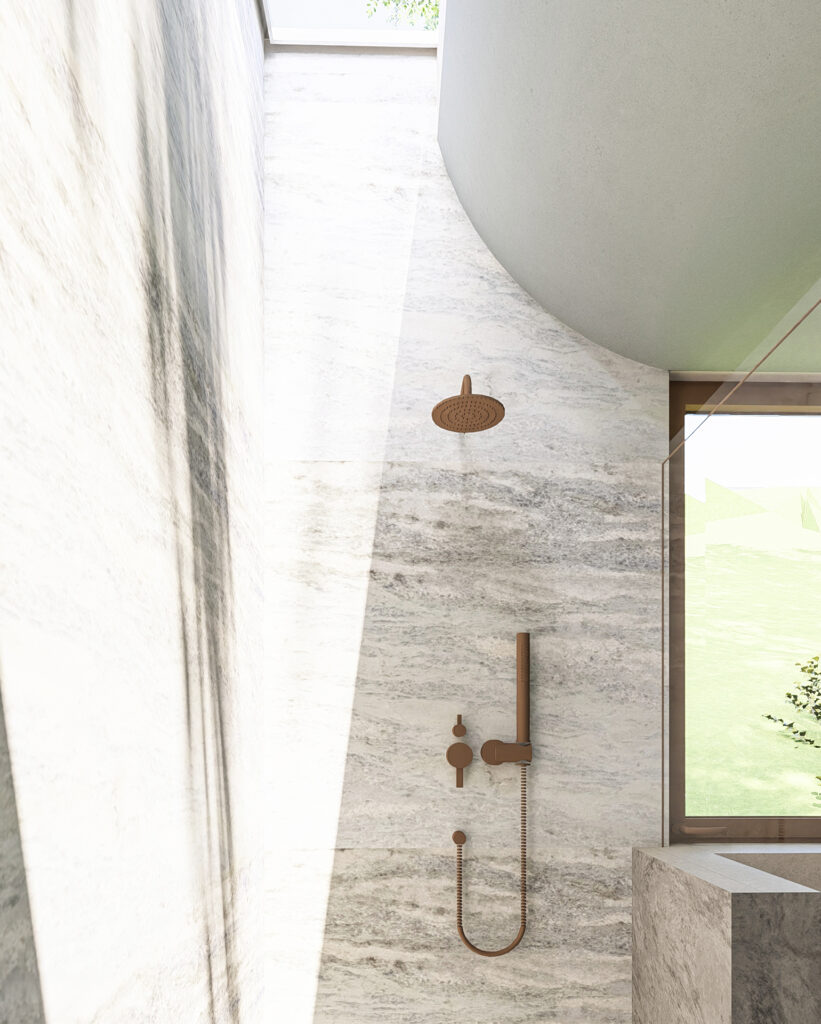
Beyond Aesthetics: Function Through Softness
Curves serve practical purposes that straight lines simply cannot. They distribute structural loads more efficiently, create better acoustics by eliminating harsh sound reflections, and improve traffic flow by eliminating bottlenecks at corners.
But perhaps most importantly, curves make spaces feel larger while maintaining intimacy, a paradox that straight-lined rooms struggle to achieve. The eye travels along a curve without interruption, creating a sense of spaciousness, while the enveloping form maintains the psychological comfort of enclosure.
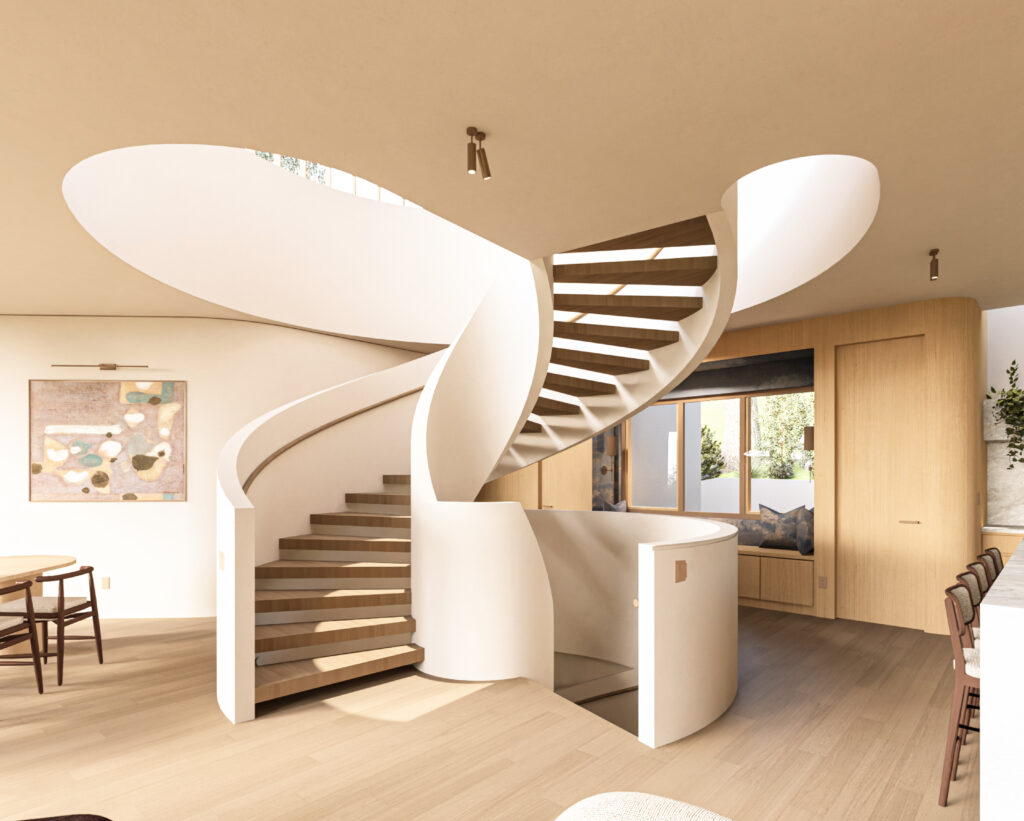
Curves as Signature
At Mahya Salehi Studio, integrating soft curves has become one of our signature elements, not as a stylistic flourish, but as a fundamental approach to human-centered design. Whether it’s a gentle archway that frames a dining area, a curved kitchen island that encourages gathering, or the sweeping roofline of an entire residence, these soft elements serve as counterpoints to the harder realities of urban life.
We’re not advocating for architecture without edges as contrast is essential for dynamic, engaging spaces. But we believe that introducing curves into predominantly rectilinear environments creates a balance that speaks to our deepest human needs for both security and beauty.
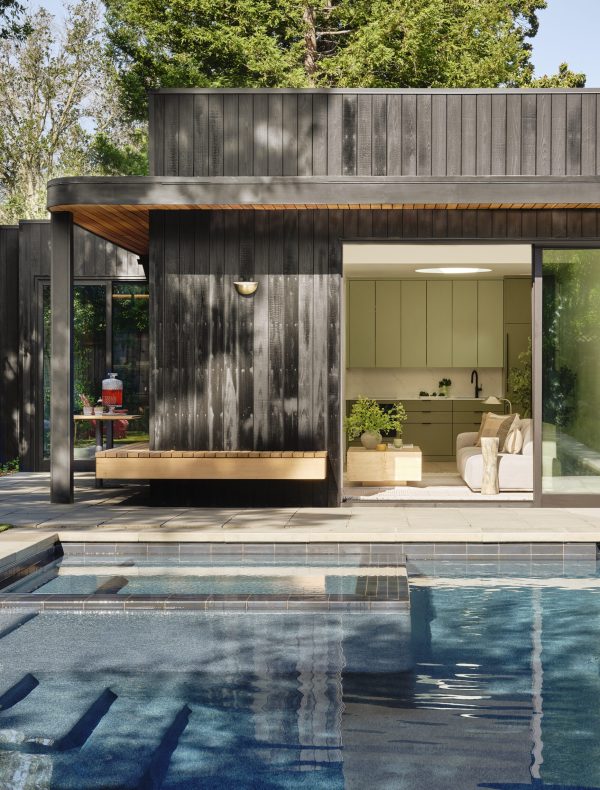
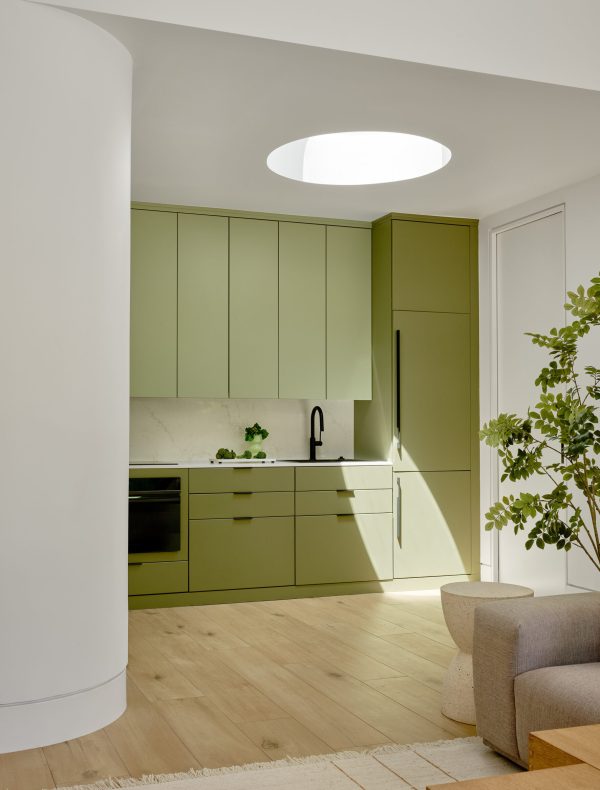
Creating Spaces That Heal
In our increasingly angular world, from smartphone screens to office cubicles, spaces with intentional softness become even more precious. They offer our nervous systems a chance to reset, our relationships a chance to flow more naturally, and our spirits a chance to expand.
Every curve we design is an act of resistance against architecture that treats humans as mere users rather than complex beings with emotional, psychological, and spiritual needs. It’s our commitment to creating spaces that don’t just shelter bodies, but nourish souls.
When we shape our environments with soft strength, we’re not just designing buildings—we’re designing the conditions for deeper human connection, for the kind of everyday moments that become the foundation of meaningful lives.
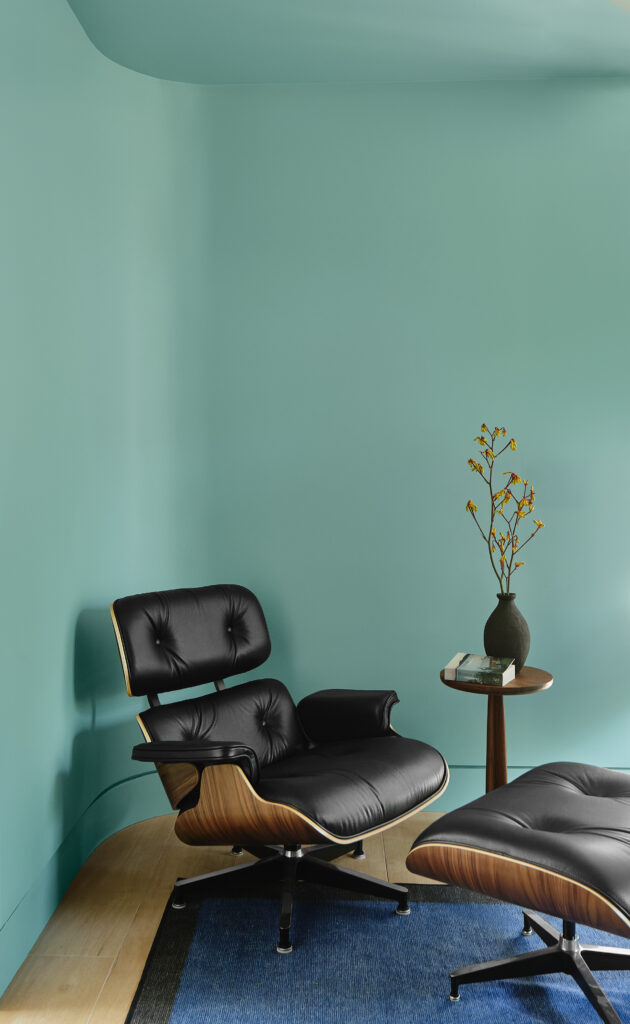
The next time you find yourself in a space with intentional curves, notice how your body responds. Feel your shoulders drop, your breathing deepen, your guard come down. That’s not an accident, that’s architecture working at its most profound level, creating the conditions for you to be fully, comfortably human.
“Mahya Salehi Studio creates engaging, inspiring, and dynamic spaces for ambitious clients throughout the Bay Area and beyond. Our holistic approach spans architecture, interiors, and visual storytelling, always with the human experience at the center.”
